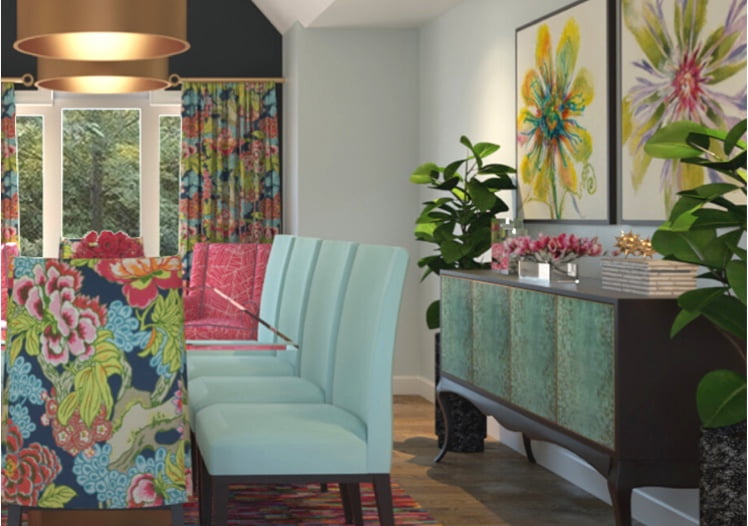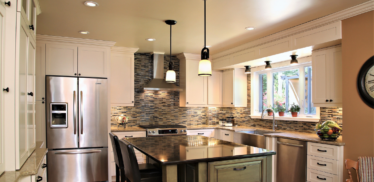Anne-Marie Brunet, CKBD, CAPS
Universal design in these home areas is a thoughtful move even if you don’t need it for yourself
While your family may not require any changes to your home right now, consider those visiting your home. Perhaps you have friends, parents, grandparents or other visitors with mobility devices. Including the following three accessibility features will make your home easier for them to visit.
- At least one zero-step entrance on a route that’s accessible from either the driveway or sidewalk — a slight slope blended in with the landscape is always friendlier than a bulky ramp.
- Interior doors that have at least 32 inches of unobstructed width (for walkers and wheelchairs).
- A half bath on the main floor (accessible without stairs).
These features also will help any nonimpaired individuals remain in the home down the road should they develop a disability, either temporary or permanent.
When we’re vibrant and independent, we rarely give consideration to these concerns. However, consider for a moment the possibility that you or one of your family members may sustain a temporary injury requiring the use of a chair or walker for the recovery period. How would your home measure up?
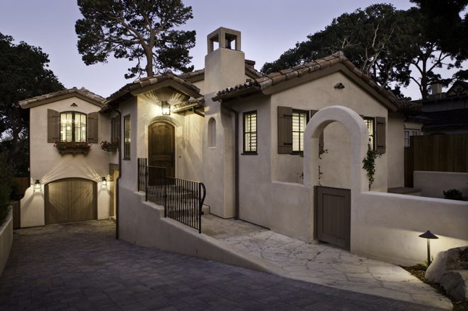
The Entry
This is a wonderful example of how to incorporate a ramp on a traditional house. A gentle slope from the driveway leads to the courtyard entry and a side door. Materials such as stone, flagstone, bluestone and pavers offer solid footing and gripping contact for wheelchairs. Make sure there are no trip hazards for those with walkers or crutches.
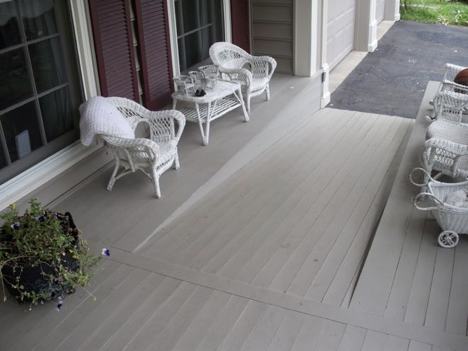
Composite decking material, as shown on this ramp, is another popular choice. This material is best used on a covered area in climates with snow and ice, as it could get slippery. Take care when shovelling not to damage the surface. I would consider adding some sort of curb or railing for the two seating areas on either side of this ramp.
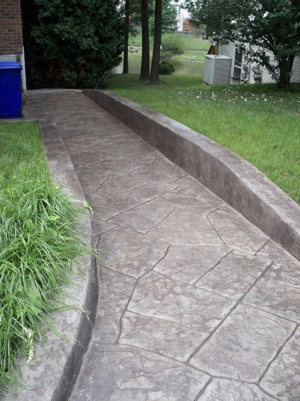
Concrete or stamped concrete also offers good contact for wheelchairs and walkers. It can be less expensive than traditional flagstone and can be coloured to complement your exterior colours. Stamped concrete also comes in a variety of shapes and patterns to mimic flagstone, slate, bluestone or pavers.
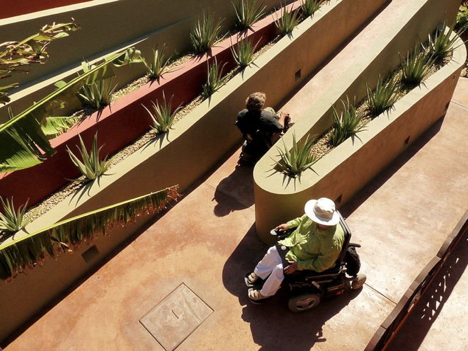
Even on hillsides, ramps and slopes can be artfully blended into the landscape. Americans with Disabilities Act (ADA) specifications require a slope ratio of 1:12, which means that for every 1 foot of the ramp, the rise should not exceed 1 inch. Therefore, if your home has an entry point that’s 16 inches above level ground, your ramp will need to be 16 feet long.
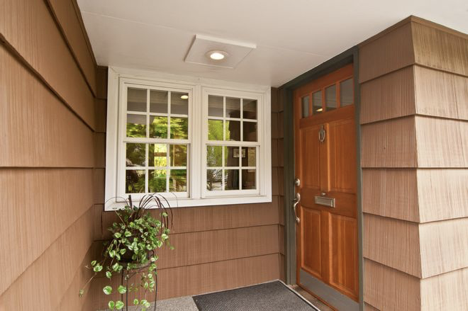
A covered or sheltered entryway offers homeowners and visitors alike shelter from the weather. This benefits those with mobility aids who need to put things aside to manipulate keys and doors. For even quicker access, keyless push-button entry systems eliminate the need to fuss with keys, and a door with a lever handle is easier to manipulate than a thumb latch or round knob. Keep this area well-lit for safety reasons, too.
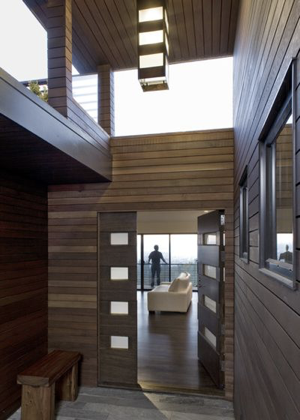
Consider having a bench or other landing space outside the entry door to put packages on.
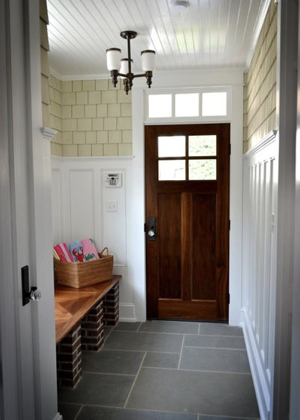
A bench or table on the inside of the entry is a bonus too for those juggling keys, walkers and packages.
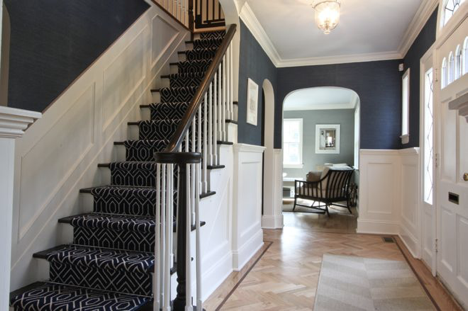
Doorways
Wider doorways and hallways contribute to the accessibility of any home. Aim for a minimum of 32 inches of clear opening. This measurement might need to be adjusted depending on the individual and mobility device. One easy option for retrofitting existing doors to provide the minimum clear opening is to replace existing door hinges with swing-away hinges. These are hinges that allow a door to completely swing away from the opening, creating a wider passage; they can be used on doors 30 inches or wider. A door smaller than 30 inches wide would not comply with the minimum clear opening of 32 inches.
Pocket doors can also minimize door swings, but they require more remodelling work than swing-away hinges do. The Modernus Roto door reduces swing space by 40 per cent and has only a 30 per cent force requirement for ADA accessibility.
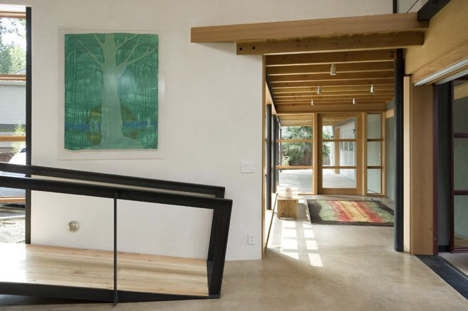
Wider hallways and turn zones allow individuals with wheelchairs to easily turn and navigate. Aim for a minimum of 5 feet wide on average; however, some in motorized chairs will need a more generous 7 feet radius to turn their chairs.
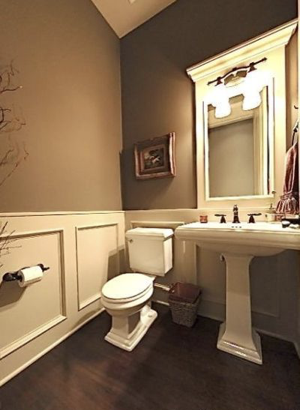
A Main Floor Half Bath
A powder room on the main level embraces accessibility. Aim for ample floor space for easy navigation.
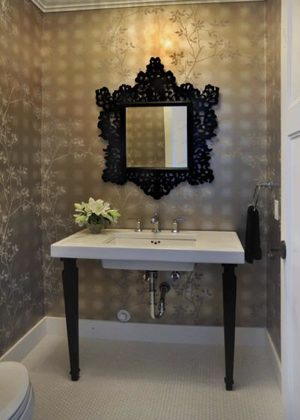
While the door on this quaint powder room swings in, ample floor space means a wheelchair can still navigate it. The light switch is also lower for ease of use. A pocket door in this room would completely free up floor space for easy transfer to the toilet.
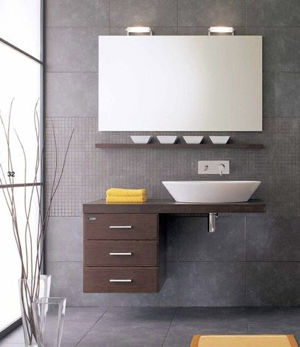
This vanity allows for a front approach as well as a side approach to access the wall-mounted faucets. It has ample room underneath for wheelchair users, too.
QUICK RECAP
- At least one zero-step entrance on a route that’s accessible from either the driveway or sidewalk — a slight slope blended in with the landscape is always friendlier than a bulky ramp.
- Interior doors that have at least 32 inches of unobstructed width (for walkers and wheelchairs).
- A half bath on the main floor (accessible without stairs).
These features also will help any non-impaired individuals remain in the home down the road should they develop a disability, either temporary or permanent.





